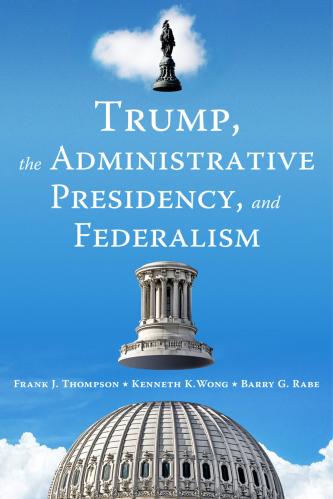If it’s Halloween, then October is over and it’s time to take a look back and see what we’ve learned from all the research and commentary at Brookings over the past month. Here’s a sample:
1. The incomes of those formerly incarcerated grow little with age compared to those who have never been in prison.
By age 45, according to new analysis from The Hamilton Project at Brookings, individuals who were incarcerated at least once between 1979-2012 earn $41,000 less by age 45 than those never incarcerated. Not all of the discrepancy can be attributed to the fact of incarceration itself.
Learn more facts about incarceration and prisoner reentry >
2. Between July 2015 and June 2016, internet shutdowns cost at least $2.4 billion in GDP across the globe.
In a study of 81 short-term deliberate shutdowns of digital services, apps, or general internet access in 19 countries, Darrell West found the costs of reductions in economic activity alone amounted to $968 billion in India, $465 million in Saudi Arabia, and $35 million in Turkey.
3. U.S. infrastructure spending as a share of GDP is less today than it was in 1959
Infrastructure spending is now about 2.5 percent of U.S. GDP—down from a high of 3 percent in 1959. Adie Tomer and Joseph Kane call attention to the major challenges facing infrastructure policy no matter who wins the presidential election in November.
4. America’s schools are increasingly segregated, but poverty—not race—is the biggest challenge to school quality
In new research, Russ Whitehurst, Richard Reeves, and Edward Rodrigue examine evidence that demonstrates how school segregation by family income has increased in the last 30 years, but also that higher quality charter schools can overcome the effects of school segregation on student achievement.
5. Kids born into the top 20 percent of the income distribution are 2x as likely to file a patent than kids in the other 80 percent
Future inventors ranked in the top 10 percent nationwide in math scores as children; the children of inventors file patents nearly 10 times as much as children of non-inventors. Joseph Parilla examines data on inventors and why policy should pay attention to the innovation sector.
6. Of the top five issues for Republicans and Democrats, only the Affordable Care Act overlaps
Alexander Podkul and Elaine Kamarck examine new data on the top issues for Democrats and Republicans during the 2016 primaries. The five most mentioned issues for Democrats were the Affordable Care Act, Social Security, education, minimum wage, and climate change. For Republicans: taxes, Obamacare, immigration, the national debt, and guns.
7. About 250 of 2.3 Muslims in America have become jihadi foreign fighters
This compares to 1,700 of 4.7 million Muslims in France, and 6,000 of 11 million in Tunisia. Bobby McKenzie shares his recommendations for how the next president can more effectively counter violent extremism in America.
Read the 2016 Election policy brief >
8. When it comes to investing in global education, the U.S. government invests a tenth on it of what it spends on global health
In her policy brief on the issues raised (or not raised) in the 2016 presidential election, Rebecca Winthrop argues that the next president should make education a centerpiece of American foreign assistance strategy.
9. The Trans-Pacific Partnership trade deal has potential income gains of $57 billion to $131 billion by 2032
Find out why Mireya Solís says that “the TPP enhances American influence in Asia and the world.”
10. To end world hunger by 2030, 50 million fewer people per year must be hungry
From 2014 to 2015, there were 3 million fewer hungry people in the world. Homi Kharas and John McArthur review where we stand in achieving the Sustainable Development Goal of ending hunger, and call for greater accountability and focus on food and nutrition security.
The Brookings Institution is committed to quality, independence, and impact.
We are supported by a diverse array of funders. In line with our values and policies, each Brookings publication represents the sole views of its author(s).





Commentary
10 things we learned at Brookings in October
October 31, 2016